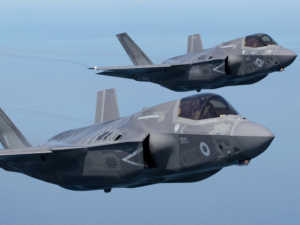Jul
16
First Step in Rebuilding U.S. Military?
“We’ve done deep damage to our military because of the budget cuts, the continuing resolutions, the erratic nature of funding over the last few years.” — Rep. Mac Thornberry (R-TX), Chairman of the House Armed Services Committee (HASC)
I considered writing about the Russia collusion / Trump Jr. mess, but then I figured you all are probably as tired of it as I am. Same goes for the healthcare bill stuff. So, here’s something a bit fresher…

Soon-to-be-commissioned USS Gerald R. Ford
Every year, Congress passes a National Defense Authorization Act (NDAA), which directs how federal funds should or should not be used by the DoD for the current fiscal year. Actual spending limits are addressed in a subsequent defense appropriations bill, but the authorization bill does “authorize” various dollar amounts to be budgeted “for military activities of the Department of Defense and for military construction, to prescribe military personnel strengths for such fiscal year, and for other purposes.”
The House passed the NDAA for Fiscal Year 2018 (which begins 10/1/2017) — aka H.R. 2810 — this past Friday with a 344-81 vote. This means that majorities in both parties supported it, though 8 Republicans voted against it. Not surprisingly, there was some controversy over the bill, with hundreds of submitted amendments, many of which were screened out or voted down — e.g., Rep. Hartzler’s bid to greatly restrict funding for “gender transitions”. (A few of the proposed amendments are mentioned in this Defense News article and details on the votes are here.) What is also notable about the bill is that the authorized $696.5 billion is over 15% more than President Trump asked for. Woohoo!
As per Travis J. Tritten at the Washington Examiner,
“The House-passed NDAA bill would add 17,000 soldiers to the Army, something requested by the service but unfunded under the president’s budget, as well as authorize purchase of four additional Navy ships, 17 more F-35 fighter jets, and eight more F/A-18 Super Hornet jets. The House bill is comprised of two sections, one that would authorize $631.6 billion in base defense spending [including $10 billion from the wartime Overseas Contingency Operations account], and $65 billion in overseas war spending.
Trump requested a $603 billion defense plan in May that was already an increase over last year’s funding, but still focuses on shoring up existing forces and pushes his promised military buildup into 2019.
The House’s NDAA defense bill must be reconciled with Senate plans, but the vote Friday was another sign the two chambers may push big increases for the military for the coming fiscal year.
Senators are now weighing an NDAA authorizing $700 billion in spending, which also blows past Trump’s defense budget and also hikes aircraft, ship and troop numbers.”
Democrats have been pushing for parity in defense and non-defense budget increases, and the current bill exceeds statutory budget caps by $72 billion. In order to ease those caps, it must pass the Senate with 60 votes, which means a certain amount of support is required from Democrats, giving them leverage. Adam Smith (D-WA), ranking member of HASC, praises the bill but thinks it can be made better when domestic spending is brought into consideration.
“[T]o simply gut the nondefense discretionary budget to plus-up defense does not make this country safer. I care enough about national security that I would raise taxes to pay for it.”
Sounds like some intense negotiations, maybe with some creative budgetary workarounds, are in the offing….
I firmly believe in the “peace through strength” axiom, so I’m all for Trump’s buildup plans and delighted that a bipartisan majority of Congress appears to be for it, as well. We have powerful and influential enemies and potential enemies (e.g., ISIS, China, Russia, North Korea, Iran, etc.), and we need to be big-n-bad enough to make them think thrice about doing anything aggressive or to jeopardize our security and that of our allies. Of course, one still has to be smart about how to spend those defense dollars, and some complain that the money can be better spent elsewhere. For example, the F-35 has been somewhat controversial, so some people think we should axe that program and stick to the tried-n-true craft (e.g., F-15 Silent Eagles or even more F/A-18 Super Hornets).
I don’t know enough about all that to weigh in. (Here are a couple informative articles in defense of the F-35, though.) But, I am certainly encouraged by the steps being taken to rebuild the U.S. military into even more of a force to be reckoned with than it already is, despite being greatly diminished in recent years. I truly hope & pray the House and Senate can work together and make some wise decisions on our defense spending. Many lives depend on it.
















